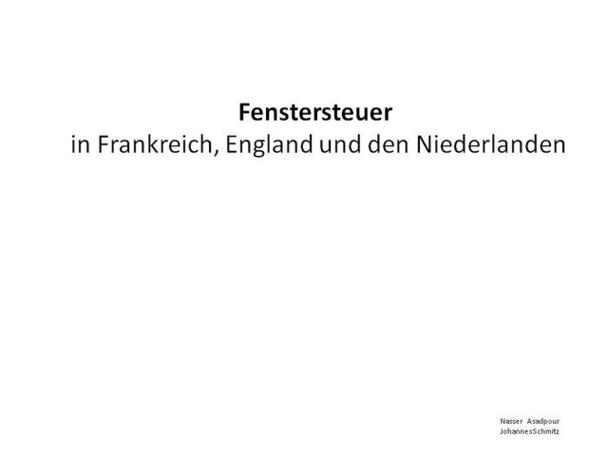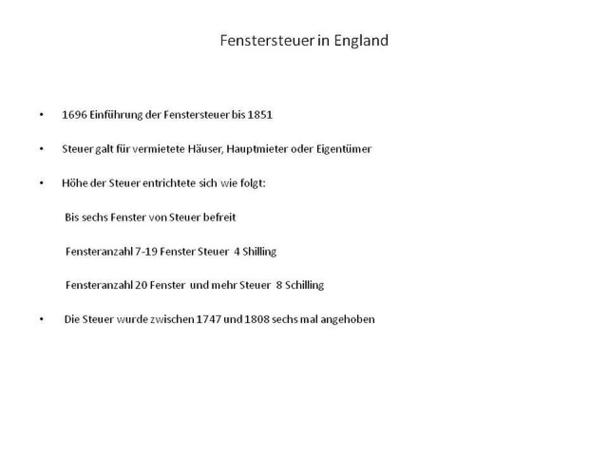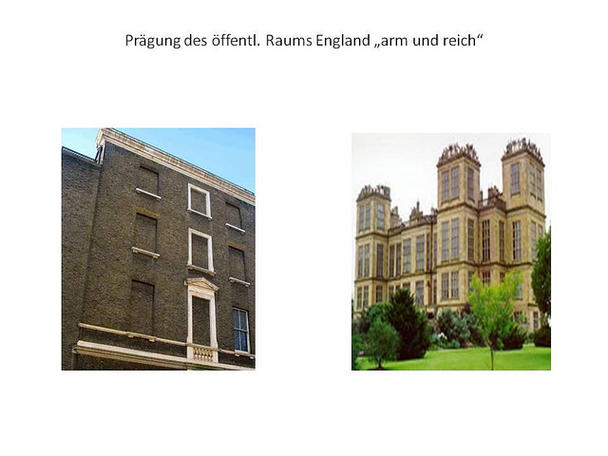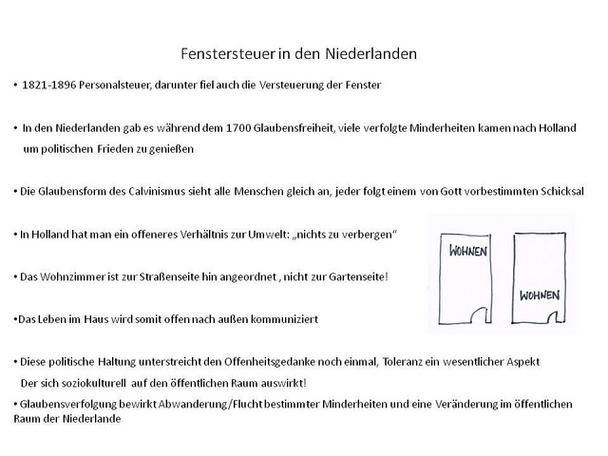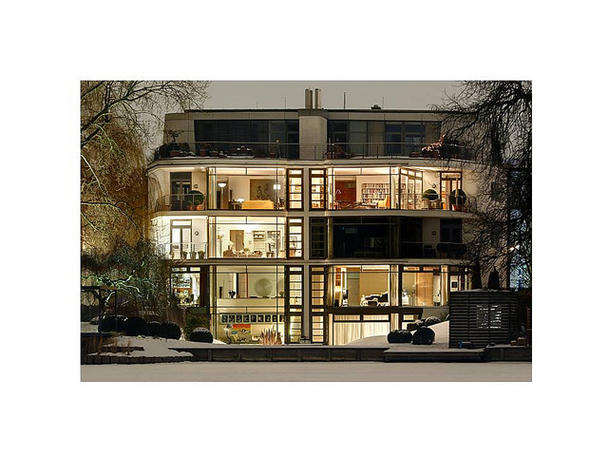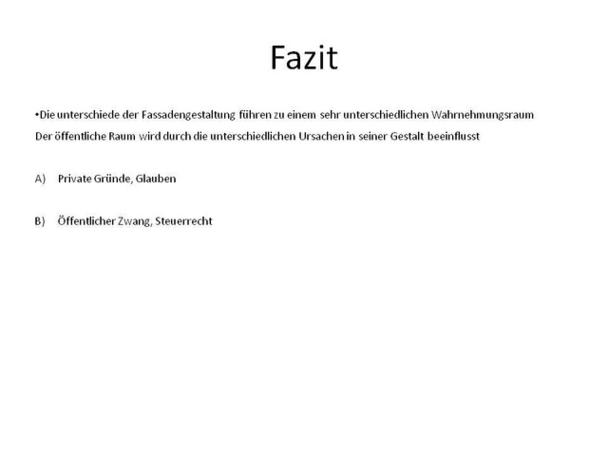Nasser Asadpour Shirazi, Johannes Schmitz, 05.03.2013
Window tax in France, England and the Netherlands:
The function of windows for a building is important for ventilation and lightning inside of it. Further more windows are the intersection between private life and public space, communicating more or less what is going on inside a building. In modern times windows are sometimes like showrooms, their size and the amount of windows of a building is influencing the public space.
In France the window tax was invented in 1789 and had to be paid by the landlord or the owner of a building. The sum of tax was depending of the inhabitants of a city and had to be paid once a year. Civil institutions like hospitals were excluded of paying the tax. The tax had to be paid for all windows that were showing to the street, that was the reason why building windows at the front side was avoided mostly. The effect was a that there was low communication between private and public space.
In England the tax was invented in 1696 and had to be paid like in France from the landlord or the owner of a house. Buildings with less than six windows didn`t had to pay the tax, buildings with 7 up to 19 windows had to pay four shillings per window, buildings with 20 or more windows had to pay 8 shillings. The tax was lifted between 1747 and 1808 six times and critics were against the tax, because mostly rich people could pay high taxes, having more windows and light.
In the Netherlands the window tax was a part of the house-tax that had to be paid by every household, including the windows of a building. The grids of housing in the Netherlands are special because the living room is mostly arranged in the front part of a house, so privacy and public space are connected closer. The windows and their size are playing a very important role in this part , because the huge format shows open the inside of a room and people who are walking along can see the life inside. In the Netherlands most people were Calvinists, in their belief nobody had to hide anything so there was no reason to hide the living room.
Nowadays we are used to see huge windows, whole facades are made of glass and in publicity the inside part of a building becomes a “showroom”.
